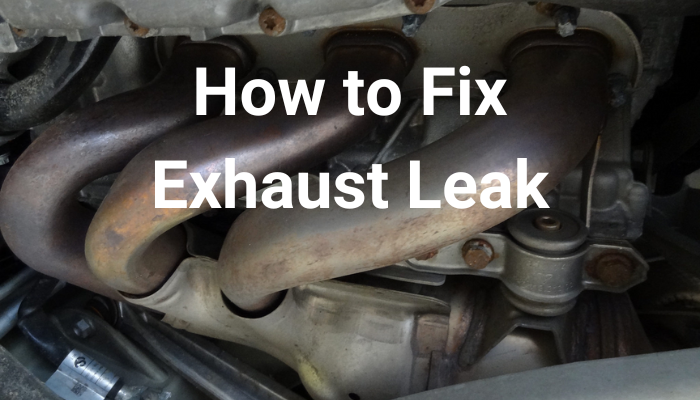Addressing exhaust leaks is a critical aspect of resolving the P0420 code and ensuring your vehicle’s exhaust system operates efficiently. As an experienced mechanic, I can’t stress enough how essential it is to tackle exhaust leaks promptly. In this section, we’ll explore the importance of fixing exhaust leaks and provide guidance on how to do it effectively.
Exhaust leaks can be a silent contributor to the P0420 code. They allow outside air to enter the exhaust system, disrupting the balance of gases that the oxygen sensors monitor. This can lead to false readings and trigger the code.
Additionally, exhaust leaks can have several negative consequences, including Reduced Catalytic Converter Efficiency, Engine Performance Issues, and Safety Concerns.
In this guide, we’ll delve deep into the art of diagnosing and fixing exhaust leaks, offering a mechanic’s perspective on ensuring your ride stays in top-notch condition.
Common Causes of Exhaust Leaks
- Gasket Grief: A worn-out or damaged gasket can turn a well-tuned exhaust system into a leaky mess. Check those joints, especially around the manifold, and swap out those gaskets regularly.
- Loose Connections: Bolts and clamps may have a mind of their own, loosening over time due to the relentless vibrations and heat. A mechanic’s remedy? Snug ’em up with the right tools.
- Rust and Corrosion: Our arch-nemesis, rust, loves to chew through exhaust systems. Regular inspections are your best defense against weak spots caused by corrosion.
- Cracked Pipes or Mufflers: A physically battered exhaust system is a leak waiting to happen. A meticulous inspection of pipes and mufflers is non-negotiable.
How to Fix Exhaust Leaks
Addressing exhaust leaks is a multi-step process that involves identifying the source of the leak and making the necessary repairs:
Visual Inspection:
Start by visually inspecting the entire exhaust system. Look for visible holes, cracks, or damaged components, including the exhaust manifold, pipes, joints, and gaskets.
Use Soapy Water:
A common technique for locating leaks is to use a mixture of soapy water. Spray this solution onto suspected areas while the engine is running. If you see bubbles forming, it indicates the presence of a leak.
Welding or Replacement:
If the leak is small and limited to a specific component, it may be possible to repair it through welding or by using exhaust patch kits. However, if the damage is extensive or in a critical area, replacement of the affected component may be necessary.
Tightening Connections:
Grab the torque wrench and ensure those bolts and clamps are tight. A snug fit is your first line of defense.
Gasket Replacement:
Gaskets are the unsung heroes of the exhaust system. Swap out the tired ones with new ones, making sure they sit tight for a leak-free performance.
Professional Help:
If you’re uncertain about identifying or repairing exhaust leaks, it’s advisable to seek the assistance of a professional mechanic. They have the expertise and tools to address the issue correctly.
Remember that fixing exhaust leaks not only helps address the P0420 code but also ensures that your vehicle runs efficiently, maintains emissions compliance, and keeps you and your passengers safe from harmful exhaust fumes.
Conclusion
To sum it up, fixing exhaust leaks and dealing with the P0420 code might seem tricky, but it’s doable. Whether you like working on your car or prefer a mechanic, taking simple steps can help. Just keep an eye out for common problems like damaged gaskets or loose parts. Tighten things up, replace what’s worn out, and check your catalytic converter. Don’t forget about those oxygen sensors—they play a big role too. Resetting the error code is like giving your car a fresh start.
In the end, it’s all about keeping things in good shape. Regular check-ups and fixing issues early not only get rid of that pesky check engine light but also keep your car running smoothly for a long time. And if you’re ever unsure, it’s okay to ask a pro for help. A well-maintained exhaust system isn’t just a quick fix—it’s an investment in your car’s reliability.


